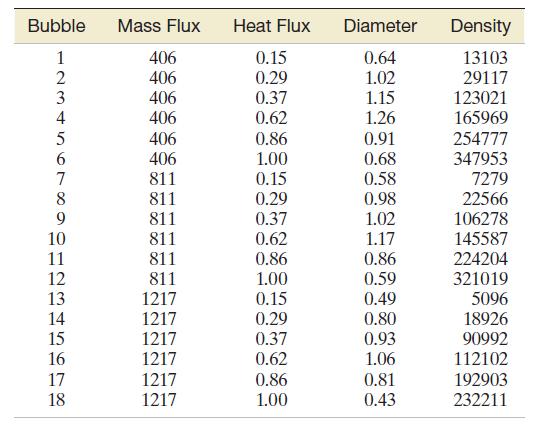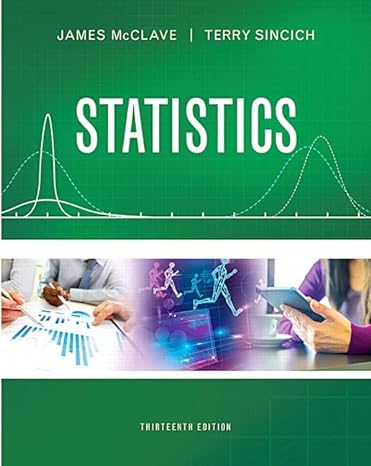Bubble behavior in subcooled flow boiling. In industry cooling applications (e.g., cooling of nuclear reactors), a process
Question:
Bubble behavior in subcooled flow boiling. In industry cooling applications (e.g., cooling of nuclear reactors), a process called subcooled flow boiling is often employed.
Subcooled flow boiling is susceptible to small bubbles that occur near the heated surface. The characteristics of these bubbles were investigated in Heat Transfer Engineering
(Vol. 34, 2013). A series of experiments was conducted to measure two important bubble behaviors: bubble diameter
(millimeters) and bubble density (liters per meters squared). The mass flux (kilograms per meters squared per second) and heat flux (megawatts per meters squared)
were varied for each experiment. The data obtained at a set pressure are listed in the following table.
a. Consider the multiple regression model E1y12 = b0 +
b1x1 + b2x2, where y1 = bubble diameter, x1 = mass flux, and x2 = heat flux. Use statistical software to fit the model to the data and test the overall adequacy of the model.
b. Consider the multiple regression model E1y22 = b0 +
b1x1 + b2x2, where y2 = bubble density, x1 = mass flux, and x2 = heat flux. Use statistical software to fit the model to the data and test the overall adequacy of the model.
c. Which of the two dependent variables, diameter (y1)
or density (y2), is better predicted by mass flux (x1)
and heat flux (x2)?
Step by Step Answer:

Statistics Plus New Mylab Statistics With Pearson Etext Access Card Package
ISBN: 978-0134090436
13th Edition
Authors: James Mcclave ,Terry Sincich






